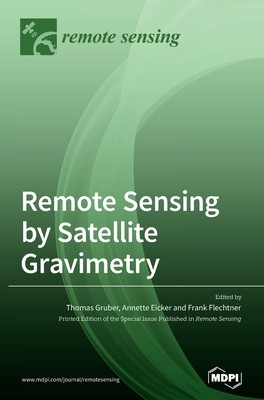
- We will send in 10–14 business days.
- Publisher: MDPI AG
- Year: 2021
- Pages: 286
- ISBN-10: 3036500081
- ISBN-13: 9783036500089
- Format: 17 x 24.4 x 2.4 cm, kieti viršeliai
- Language: English
- SAVE -10% with code: EXTRA
Remote Sensing by Satellite Gravimetry (e-book) (used book) | bookbook.eu
Reviews
Description
Over the last two decades, satellite gravimetry has become a new remote sensing technique that provides a detailed global picture of the physical structure of the Earth. With the CHAMP, GRACE, GOCE and GRACE Follow-On missions, mass distribution and mass transport in the Earth system can be systematically observed and monitored from space. A wide range of Earth science disciplines benefit from these data, enabling improvements in applied models, providing new insights into Earth system processes (e.g., monitoring the global water cycle, ice sheet and glacier melting or sea-level rise) or establishing new operational services. Long time series of mass transport data are needed to disentangle anthropogenic and natural sources of climate change impacts on the Earth system. In order to secure sustained observations on a long-term basis, space agencies and the Earth science community are currently planning future satellite gravimetry mission concepts to enable higher accuracy and better spatial and temporal resolution. This Special Issue provides examples of recent improvements in gravity observation techniques and data processing and analysis, applications in the fields of hydrology, glaciology and solid Earth based on satellite gravimetry data, as well as concepts of future satellite constellations for monitoring mass transport in the Earth system.
EXTRA 10 % discount with code: EXTRA
The promotion ends in 23d.19:04:03
The discount code is valid when purchasing from 10 €. Discounts do not stack.
- Publisher: MDPI AG
- Year: 2021
- Pages: 286
- ISBN-10: 3036500081
- ISBN-13: 9783036500089
- Format: 17 x 24.4 x 2.4 cm, kieti viršeliai
- Language: English English
Over the last two decades, satellite gravimetry has become a new remote sensing technique that provides a detailed global picture of the physical structure of the Earth. With the CHAMP, GRACE, GOCE and GRACE Follow-On missions, mass distribution and mass transport in the Earth system can be systematically observed and monitored from space. A wide range of Earth science disciplines benefit from these data, enabling improvements in applied models, providing new insights into Earth system processes (e.g., monitoring the global water cycle, ice sheet and glacier melting or sea-level rise) or establishing new operational services. Long time series of mass transport data are needed to disentangle anthropogenic and natural sources of climate change impacts on the Earth system. In order to secure sustained observations on a long-term basis, space agencies and the Earth science community are currently planning future satellite gravimetry mission concepts to enable higher accuracy and better spatial and temporal resolution. This Special Issue provides examples of recent improvements in gravity observation techniques and data processing and analysis, applications in the fields of hydrology, glaciology and solid Earth based on satellite gravimetry data, as well as concepts of future satellite constellations for monitoring mass transport in the Earth system.


Reviews